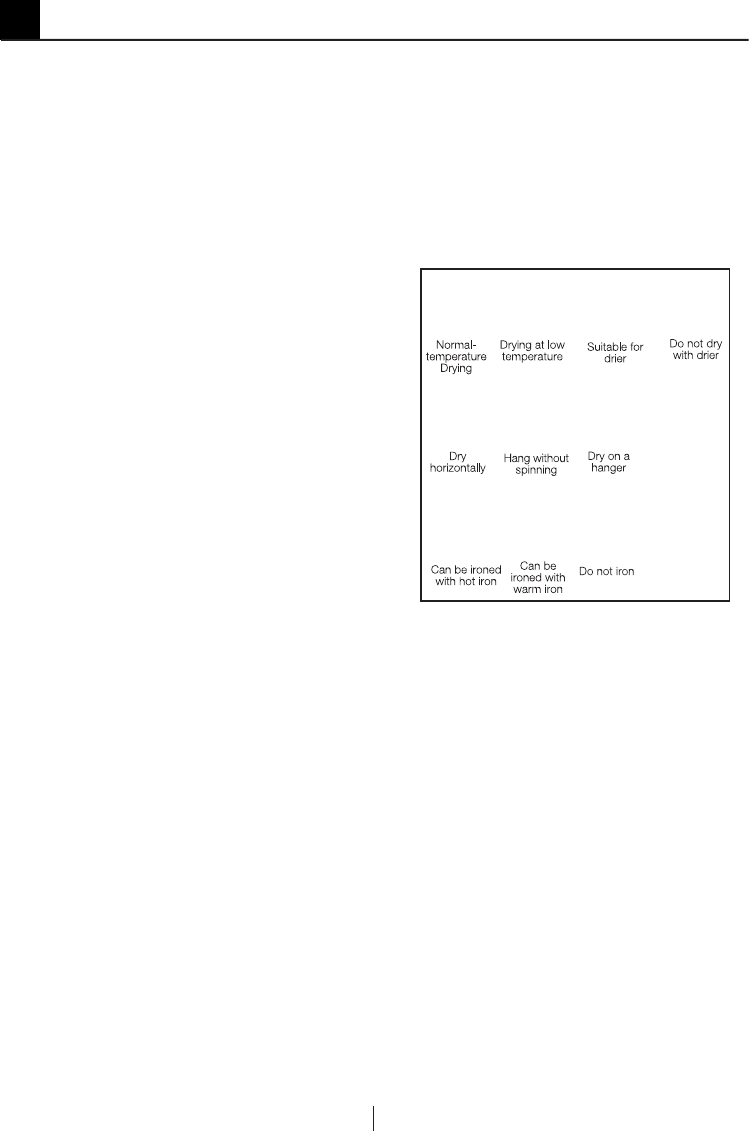
10
EN
3 Preparations for drying
Things to be done for energy
saving
Following information will help you use
the product in an ecological and energy-
efficient manner.
• Operate the product at a capacity
suitable for the program you have
selected and pay attention not to
overload.
• Spin your laundry at the highest
speed possible when washing them.
Thus, the drying time is shortened
and energy consumption is reduced.
• Dry the same type of laundry
together.
• Follow the instructions in the user
manual for programme selection.
• Leave sufficient clearance at the
front and rear side of the dryer for
air circulation. Do not block the
ventilation grills at the front side of the
product.
• Do not open the loading door of
the machine during drying unless
necessary. If you must certainly open
the loading door, do not to keep it
open for a long time.
• Do not add new (wet) laundry during
drying.
• Lint and fibres released from the
laundry to the air during the drying
cycle are collected in the Lint Filter.
Clean the lint filter before or after each
drying cycle.
• Clean the filter drawer regularly either
when the Filter Drawer Cleaning
warning symbol appears or after
every 5 drying cycles
• Ventilate the room, where the dryer is
located, well during drying.
• For models with lamp, keep the door
closed if the On/Off button is pressed
(if the machine is energized) when
machine is not in use.
Laundry suitable for drying in
the machine
C
Always obey the instructions given
on the garment tags. Dry only the
laundry having a label stating that
they are suitable for drying in a dryer
and make sure that you select the
appropriate programme.
ABC
l mn
o p q
D
Laundry unsuitable for drying
in the machine
• Laundry and items stated below are
not suitable for drying in a dryer:
• Laundry items with metal
attachments such as metal buttons,
metal reinforcements or belt buckles.
• Woolen or silk garments, nylon
stockings, delicate embroidered
fabrics and sleeping bags.
• Garments made of delicate and
valuable fabrics.
• Tulle curtains.
• Items made of hermetic fibres such
as pillows and quilts.
• Very wet laundry items.
• Unwashed dirty laundry items.
• Laundry items containing rubber
foam or rubber.


















